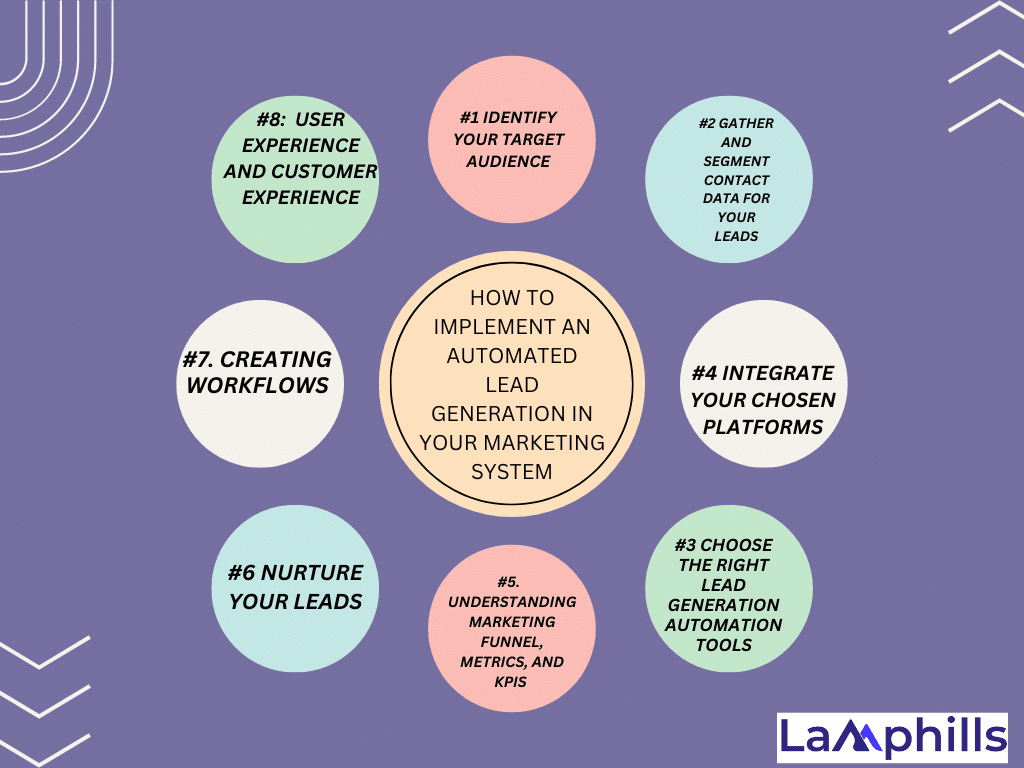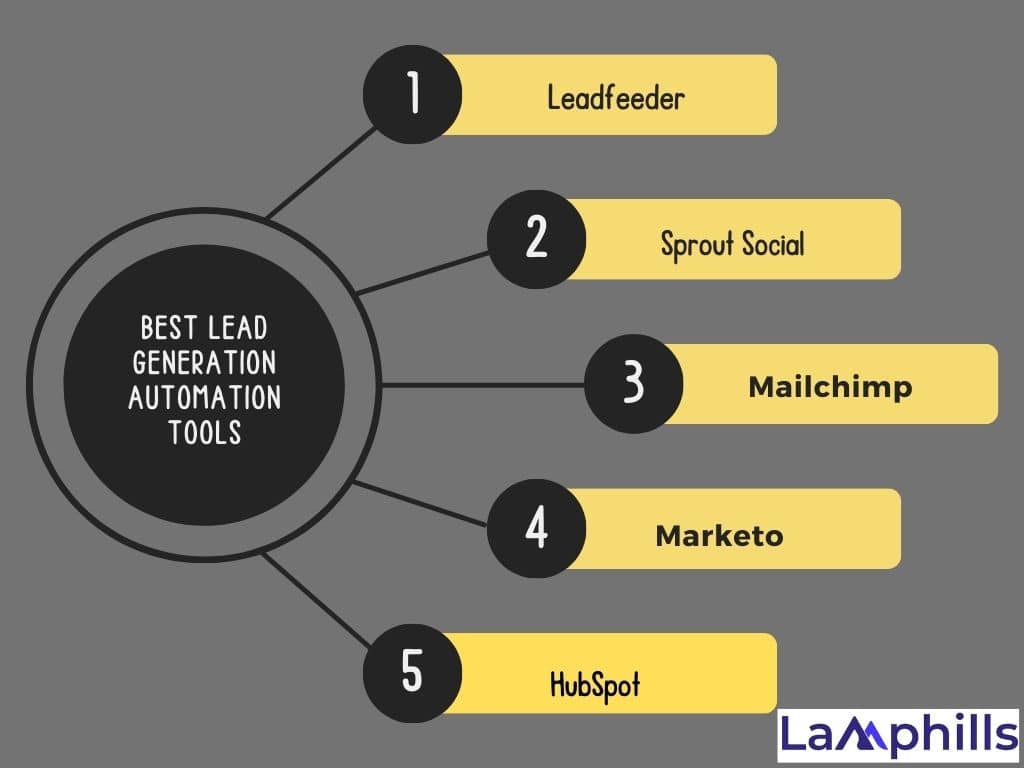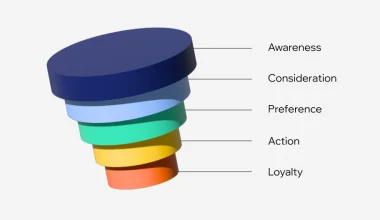Do you ever feel pressured or out of time like me? With targets to fulfill and goals to attain, time can definitely disrupt your company’s progress. Hence, the reason why marketing automation, or software is vital to automate some components of your lead generation and marketing process, thereby allowing your company to get better lead generation with effective results.
In this article, I’ll go over the fundamentals of using marketing automation to efficiently and economically create leads for your company, allowing you to free up time and achieve your goals without the normal stress, effort, and hurry.
Key Takeaways
- Marketing automation enables personalized communication based on customer behavior. For example, sending tailored emails or content based on a lead’s interactions with your website increases engagement and conversion rates.
- Utilizing the right tools like HubSpot, Marketo, or MailChimp can significantly streamline lead generation and marketing processes. These platforms offer features such as automated email campaigns, lead scoring, and integration with CRM systems.
- Ensuring that your contact data is accurate and well-segmented is vital for the success of automated campaigns. Proper segmentation allows for targeted and relevant marketing efforts, improving lead quality and conversion rates.
- Regularly analyzing the performance of automated marketing campaigns and making necessary adjustments is crucial. Using analytics and A/B testing helps identify what works best, ensuring continuous improvement and maximizing the effectiveness of lead generation strategies.
What Exactly is Marketing Automation?

Imagine yourself as the owner of a small business, and your marketing efforts feel like a never-ending hamster wheel. You send emails, post on social media, and maybe even run some advertising, but the leads aren’t rolling in as quickly as you’d like. Quit the panic, I’ve already been there. I was in the same situation a few years ago, always juggling responsibilities and feeling overwhelmed by the sheer number of potential customers who fell through the cracks. Then I discovered marketing automation, and it changed everything.
In other words, marketing automation is the use of software to automate many of the marketing and lead duties that you presently handle on your own.
The most frequent type of marketing automation is email marketing. Using software like Drip, ConvertKit, and Infusionsoft, you can automate your entire email marketing process, from the initial opt-in and follow-up sequence to behavioral email.
This implies that when a potential consumer signs up to receive your emails, you may send them a series of messages tailored to pique their interest in your product or service, and then automatically change your emails based on their behavior.
Trust me, the result is a more successful marketing strategy that generates leads on its own, freeing up your team’s time to focus on bigger-picture objectives like turning leads into customers and expanding your business.
What is Automated Lead Generation?
Lead generation is the cornerstone of marketing and sales: it is the act of identifying possible consumers and clients for a firm. Automated lead creation simplifies the process by utilizing digital tools to accomplish many of the time-consuming processes involved. This is to obtain a solid sense of what automated lead generation would look like for your company.
Understanding How Lead Generation and Marketing Automation Work Together
Converting leads to customers takes time. This is especially true for B2B purchases when a single lead (or person) rarely has the authority to make a purchase decision on their own.
This is because what traditional lead generation strategies lacked was a mechanism to track leads without having a sales representative call them regularly to inquire about their purchase plans. Fortunately, marketing automation technologies bridged the gap. Marketing automation solutions enable marketers to:
- Build and embed lead forms on their website.
- Automatically send Thank You messages after leads complete a form.
- Assign leads to an email nurture cadence.
- Score leads based on their engagement with your website and emails.
- Send the lead to the sales team once they achieve a certain lead score.
Before you dive too quickly into lead generation and marketing automation, however, you first need to develop a deep understanding of your prospects, your customers, and your sales process. Unfortunately, the combination of lead generation and marketing automation can backfire when:
- Businesses with a long sales cycle conduct too much outreach in a short amount of time.
- Businesses that sell multiple products send outreach about a different product than the one the lead expressed interest in.
- Sales representatives reach out too soon before a lead is ready to have a conversation.
Implementing an Automated Lead Generation In Your Marketing System

Despite all these amazing benefits, transitioning to new technology can be difficult. Worry not: here is a comprehensive step for implementing an automated lead generation system in your organization.
#1 Identify Your Target Audience
Before you do anything else, be as specific as possible about the types of leads you want to attract. This entails identifying and characterizing your intended audience in detail. Hence, a good place to start is with a buyer persona. This is a fictional figure who represents your ideal customer. Consider your target audience’s interests and why they want to buy from your brand.
When determining your target audience, you’ll want to consider demographic information. This includes information like the region, age, and gender of your target audience. All of this information is critical for ensuring that your lead generation automation solutions identify the best matches for your company.
#2 Gather and Segment Contact Data for Your Leads
The next step is to maximize the effectiveness of your lead creation automation technologies by segmenting them. Once you’ve gathered the necessary contact information (make sure it’s up-to-date and accurate), you’ll need to put it to good use.
This begins with separating the data into various chunks. You can segment your leads in a variety of ways, including by demographics or activity, such as having a group of sales-qualified leads.
Once this data has been adequately divided, you may focus your marketing efforts on certain segments. This implies that even when you use automated marketing techniques, each lead will have an experience that is tailored to their specific needs.
#3 Choose the Right Lead Generation Automation Tools
Selecting the appropriate marketing automation tool is critical. Consider factors like usability, integration capabilities, and scalability. When I first started, I chose HubSpot because of its user-friendly layout and powerful features, but it’s critical to find a platform that meets your specific requirements.
#4 Integrate Your Chosen Platforms
Once you have your lead generation tools sorted, you’ll need to integrate these platforms into your workflow. You’re probably already using a CRM, for instance, so you must be able to integrate your new automation tool with your existing tech stack. This will save you time and ensure that your leads are quickly incorporated into your overall sales process.
#5 Start Generating and Sharing Content
Once you’ve set up your electronic devices, it’s time to start creating and sharing content, such as through an automated marketing campaign. In this example, you would create the ad wording and design before allowing the automation technology to run the campaign across as many channels as needed with just a few clicks.
Automated content marketing is more than just ad campaigns, of course. Depending on your organization’s aims and target demographic, you can implement automated email marketing and social media marketing simultaneously to boost your entire lead generation approach.
#6 Nurture Your Leads
Identifying a high-quality lead is not enough to keep a hold on them. You must be able to nurture your leads once you’ve reached out to them.
This involves making sure that you stay in regular contact with them and only provide them with relevant information. Fortunately, this too can be automated! This is because several lead-generation automation tools include features such as AI chatbots that you can use to nurture your leads without having to divert attention and resources from other tasks.
#7. Creating Workflows
Designing effective workflows is at the heart of marketing automation. These workflows are a series of automated actions triggered by specific behaviors or conditions. For instance, if a lead downloads an e-book, you can automatically send a follow-up email with additional resources. This kind of nurturing helps move leads down the funnel without manual intervention.
#8. Convert Leads into Paying Customers
The final step is the most important: make sure that you convert your leads into paying customers! This can mean having effective landing pages for when they are directed onto your website and making sure that they are supported throughout the buying process, reducing the chance of cart abandonment.
Best Practices for Effective Lead Generation with Marketing Automation
I’ve ransacked the depths of the internet to unearth these enticing automated lead-generation tactics.
#1. Automate Cold Email Adverts
Have you ever felt disappointed after receiving a poorly designed automated email?
Yep. 🙌🏽 That’s exactly how I felt after reading this email:
And, this email:
According to the Content Marketing Institute, 73% of marketers use email as a top content distribution channel, with 71% using email engagement to measure the effectiveness of content to generate sales. But, what does this mean? Simply, an advanced, automated email system can improve your bottom line.
However, automated emails still require personalization. Aaron Ross, CEO of Predictable Revenue, gained 16 new customers simply by personalizing his automated email template.
B2B companies around the world dream about automating their email processes.
Harnessing the power of email automation isn’t easy, though. Ask yourself, how will your company succeed in this elevated era of customer expectations?
#2. Create Personalized Website Experiences

One misconception about B2B personalization is that it is vastly different from B2C.
The common denominator? There’s still a human behind the product or service that you’re targeting.
Brian Solis, head of global innovation at ServiceNow, explains it like this. Business buyers don’t go to work and forget what they do as humans. There’s a new normal that blurs the line between B2B and B2C. They just want things personalized. And there are countless examples of how well website personalization works.
When Philips used past behavioral data and user preferences to add contextual product recommendations to its mobile web app, it saw a 40.1% increase in conversion rate. Dynamic Yield gained a 111% increase in demo requests after personalizing elements across their site.
Personalized leads can be created from customer behaviors. When looking at customer behavior, you should divide up customers based on marketing personas.
For example, tailoring your homepage for new vs. returning visitors like Gusto.
You can also use behavior-based data geared to identify how customers navigate your website and group them according to their actions. toward paying attention to how customers navigate your website, then dividing them into groups based on their actions.
Founded in 2018, RightMessage allows users to create a welcome bar that changes messaging based on the customer seeing it.
No matter which customer behavior categories you decide to use, you will need to manually make choices, create content, and set triggers to adapt your data for personalization. Thankfully, there are plenty of useful automation tools out there to finish the job for you.
#3. Use a chatbot
According to HubSpot, marketers are increasingly turning to social media platforms like Facebook, LinkedIn, Instagram, and Pinterest to generate high-quality leads, with 89% of B2B marketers turning to LinkedIn specifically for lead generation.
However, social media can be so much more than a way for businesses to generate leads. These platforms have also become customer service channels, through which people expect immediate responses—no matter what time zone they’re in.
Here’s another instance where automation technology comes to the rescue. Chatbots can handle the complexity of language thanks to enormous advances in artificial intelligence brought about by machine learning algorithms.
However, chatbots can be utilized for a variety of purposes outside customer service. For example, Drift assists its customers in generating leads with chatbots.
After scheduling product demos with Drift, SalesRabbit observed a 40% boost in the conversion rate of requests to meetings, as well as a 50% increase in qualified leads. Larry Kim, founder of MobileMonkey, reduced their cost per lead acquisition to 97%.
And, at Leadfeeder, we use Intercom’s answer bot to help out our Customer Success team when we’re out of the office. Of course, a chatbot can’t do everything for you when it comes to communicating with customers. However, the top expectation from respondents to the Tidio study was that chatbots were available to help 24/7.
So, unless you’ve got endless resources to pay employees to provide 24/7 customer service, using chatbots has become essential. Even if you can’t answer right away, you can still gather enough information to generate a lead.
#4. Use Your Website Data
In addition to chatbots, pop-ups, lead-generation pages, and email software, there are automation tools that generate leads based on who visits your website. This is part of the service that Leadfeeder provides.
Tactikmedia acquired 600 accounts through Leadfeeder, while AlertOps raised demo rates by 700%. However, Leadfeeder’s offering differs slightly from those of other lead generation platforms. Leadfeeder automatically recognizes organizations that visit your website, allowing you to select which visitors to contact personally.
You can set up Slack notifications for certain firms who visit your site, as well as connect to other tools like your CRM, to establish a unified database of information that will allow you to follow up on all leads, regardless of how you first connected with them.
#5. Data Quality
Accurate and comprehensive data is the foundation of successful marketing automation. Ensure your data is clean and up-to-date to avoid targeting errors and missed opportunities. Regularly audit your database to maintain its quality.
#6. Content Strategy
Developing a content strategy that aligns with different stages of the buyer’s journey is critical. Provide valuable content that addresses your leads’ pain points and interests. For example, top-of-funnel content might include educational blog posts, while bottom-of-funnel content could be detailed case studies or product demos.
#7. A/B Testing
Regularly test and optimize your automated campaigns. A/B testing different elements such as subject lines, CTAs, and content can significantly improve performance. For instance, by testing two different email subject lines, you can determine which one has a higher open rate and adjust accordingly.
#8. Analytics and Reporting

Monitoring and analyzing your results is crucial for continuous improvement. Most marketing automation tools offer detailed analytics and reporting features, allowing you to track key metrics such as open rates, click-through rates, and conversion rates. Use this data to refine your strategies and maximize effectiveness.
Best Lead Generation Automation Tools

Being able to effectively automate your lead generation relies on working with the right tools. Here are the best lead generation automation platforms.
#1. Leadfeeder
Leadfeeder, now owned by Dealfront, has long been regarded as one of the top automated lead-generating and marketing solutions. It generates leads for you by using website visitor data, in addition to finding leads through social media channels.
Leadfeeder identifies the firms who visit your website and integrates this data into your CRM, making it an excellent tool for any B2B organization trying to automate its lead creation process. Its benefits include genuine GDPR compliance, transparency, and a wide selection of filters that allow you to hone in on the best leads for your organization.
#2. Sprout Social
If you’re looking for a tool that focuses on generating leads through automated social media marketing, Sprout Social might be the one. It automatically manages, monitors, and analyzes multiple social media accounts over different channels.
It’s got an easy-to-use interface, as well as a great range of reporting tools for analytics. However, it’s very focused on social media marketing and has limited integrations with tools that aren’t related to social media.
#3. Mailchimp
Mailchimp has a range of tools for automatically producing leads and running email marketing campaigns. It is built around email campaigns, but it can also be used for a variety of different lead generation purposes. Its features include analytics, A/B testing, and a drag-and-drop interface, which increases ease of use for beginners.
Although its free plan is very limited, Mailchimp’s benefits include a range of pricing options and a lot of integrations for other automation and lead generation tools.
#4. Marketo
Marketo is a comprehensive lead generation tool that automates a variety of lead generation-related operations. It allows you to manage current leads, create automated email marketing campaigns, and evaluate data from your lead-generation initiatives. It was created with B2B enterprises in mind, but it is also used by many other businesses.
Its advantages include comprehensive and strong automated lead creation features, intelligent customer targeting, and customization tools. It also provides simple connectors with a range of sales tools, although it is more expensive than the other automated lead creation solutions on this list.
#5. HubSpot
Many organizations will have heard of HubSpot, a popular marketing automation tool. You may use HubSpot to automate marketing, generate leads, and manage your customers. This implies that organizations may generate leads and establish personalized marketing campaigns all in one package.
Its main advantage is that it is a comprehensive, all-in-one solution for marketing and sales automation that also integrates with a variety of other tools. This, however, may make it difficult for newbies to gain access. Furthermore, it can be quite costly, especially for businesses trying to expand.
What is lead scoring in marketing automation?
Lead scoring is the objective comparison of one sales lead to another. It not only helps connect the appropriate follow-up with the related inquiry, but it also assists marketing and sales professionals in determining where each prospect is in the buying process.
What is the role of a marketing automation manager?
The Marketing Automation Manager will take overall responsibility for the marketing technology stack and ensure it helps the business drive more leads, improve conversions, and increase retention.
How do you succeed in marketing automation?
Tips for Successful Marketing Automation
- Know Your Target Audience. Effective audience research is critical for successful marketing automation efforts
- Define Goals
- Find the Right Time
- Draft a Workflow
- Implementation
- Monitor Results Regularly.
What is a marketing automation workflow?
Marketing automation workflows are sets of rules used to automate different steps of the marketing process.
Conclusion
Today, utilizing marketing automation for successful lead creation is no longer a luxury; it is a requirement. However, understanding its benefits, applying best practices, and staying ahead of future trends will help you turn prospects into revenues. So, take the jump, select the appropriate tools, and watch your lead generation efforts fly.
References
Related Articles
- CUSTOMER-CENTRIC MARKETING: Best Strategies for Putting Your Customers First
- Outsourced Marketing: A Detailed Guide to Using Outsourced Marketing Solutions for Small Businesses
- Hiring a PPC Expert: What to Look For and How to Choose the Right One
- (10+)Proven Landing Page Design Best Practices for 2024






